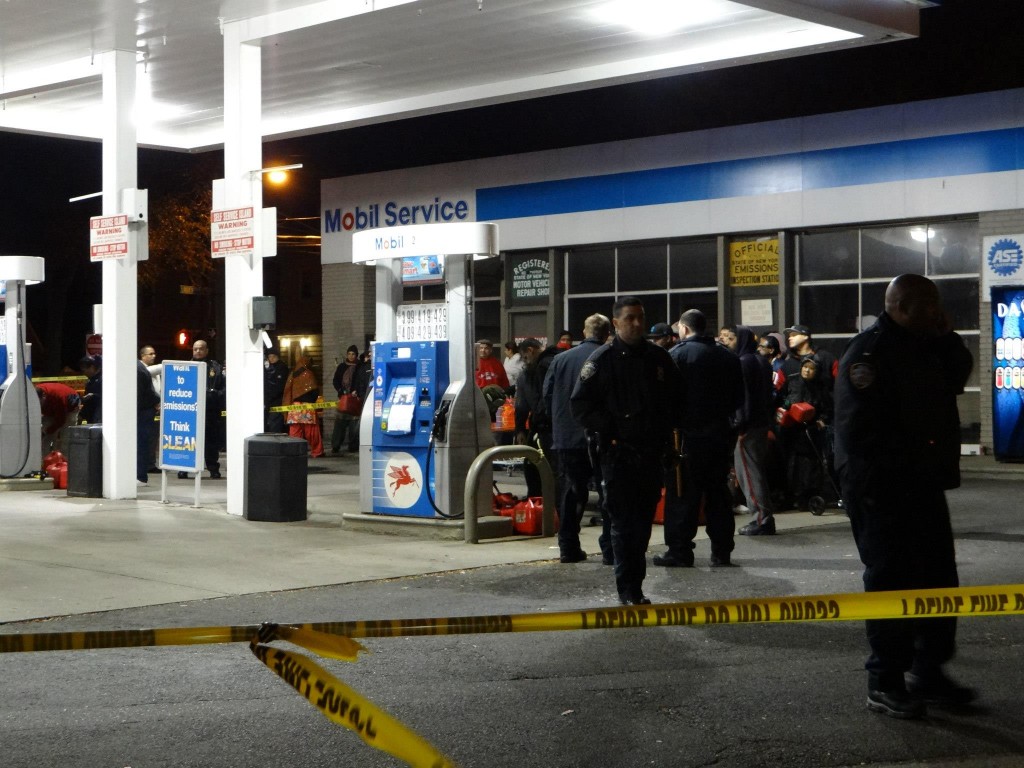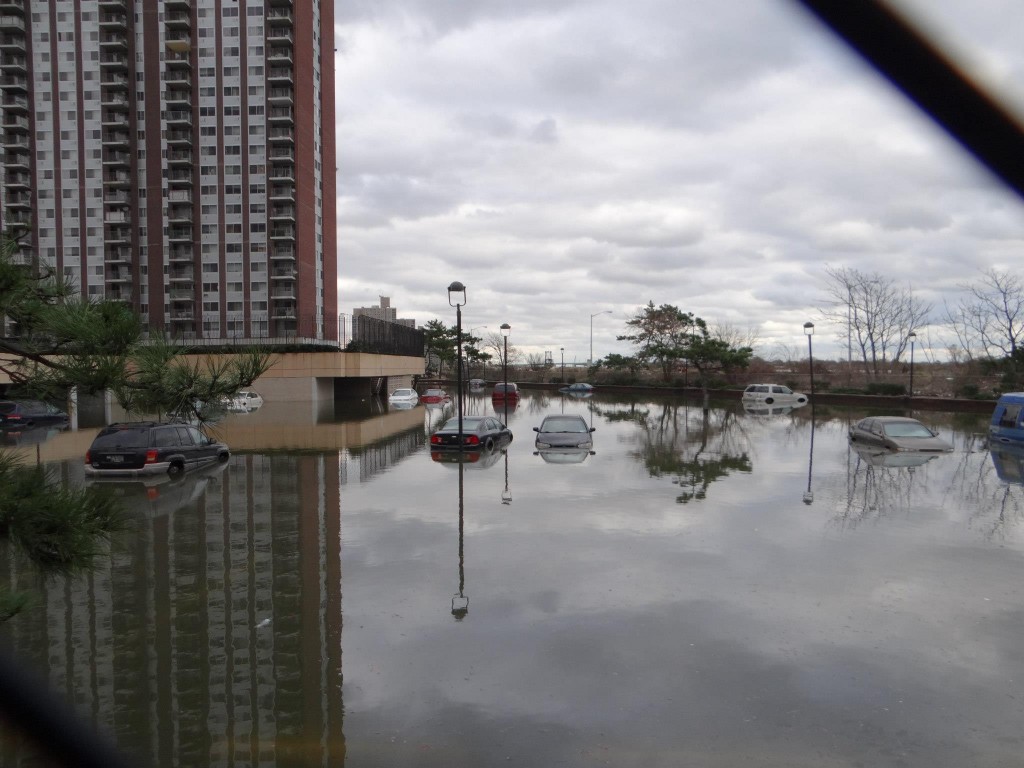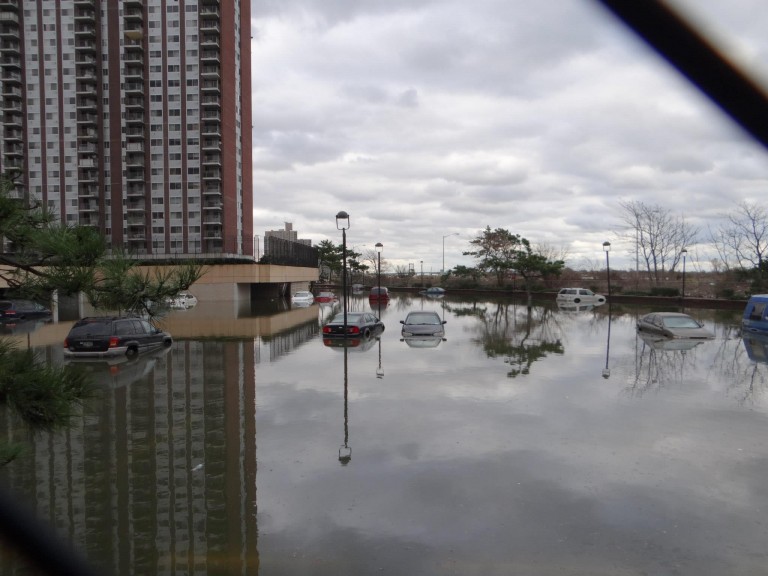
Residents faced long lines to fill up on fuel following Sandy. Fuel shortages rendered many people unable to drive their cars – even if they had one. Richard York/The Forum Newsgroup
The A-train? Shut down.
Joseph P. Addabbo Memorial Bridge? Couldn’t take it. Cross Bay Bridge? Again, no.
Even if residents wanted to get somewhere immediately after Hurricane Sandy, it was almost impossible. Subways were flooded; roads were blocked by massive piles of debris; intimidating firearm-wielding members of the National Guard made sure no one traversed bridges.
It was, of course, all happening out of concerns for residents’ safety – and for good reason, but the widespread shutdown of transportation throughout the city has since raised serious questions about flood mitigation in the city’s transportation system. And, residents’ inability to take the A-train following the hurricane, and the increasingly overcrowded buses, made it abundantly clear to many in South Queens and Rockaway that some kind of overhaul of the public transportation system needs to happen, residents said.
According to transportation officials, the city’s transportation system sustained a $5 billion hit during Sandy – and, a year later, critics are saying too little has been done to protect the tunnels and subway systems that were rocked by flooding.
Government officials have announced a number of plans they hope will help prevent water damage in portions of the transit infrastructure, including Gov. Cuomo detailing this spring a long-term proposal to flood-proof the city’s entire subway system.
Cuomo’s plan is far-ranging and includes better protecting low-lying stations and moving equipment to higher ground.
While Queens residents were able to soon access the Addabbo and Cross Bay bridges after the storm, the A train wasn’t restored until months following the hurricane – to the tune of $650 million. While the A train was out of commission, the mayor reimplemented the ferry service taking residents from the peninsula to lower Manhattan, and back – which residents have long argued should be permanent. Elected officials, including Assemblyman Phil Goldfeder (D-Rockaway Park) and Councilman Eric Ulrich (R-Ozone Park) have called on the next mayor to make the ferry service a permanent one for Rockaway residents who say they have long been the stepchild of the city’s public transportation system.
Because of the transportation woes faced during, and after, Sandy, Rockaway residents began to advocate for better services. Phil McManus, a Rockaway resident, formed the Queens Public Transit Committee, a group that advocate for better subway and bus service throughout the borough.
“The hurricane is a major reason why people in Rockaway are more active now about public transportation – they’re fed up with the lack of listening,” McManus said in a previous interview.
Fed up with two-hour commutes from Rockaway to Manhattan and buses that are consistently overcrowded or late, McManus and members of his group have been fighting to get the Rockaway Rail Beach Line reactivated, following decades of dormancy.
While McManus has the backing of a number of elected officials, including Goldfeder and U.S. Rep. Hakeem Jeffries (D-Queens, Brooklyn), others don’t want to see the line the reactivated and instead want a portion of the abandoned rail to become a greenway – something akin to Manhattan’s High Line.
Another major issue residents said the city needs to address before another major disaster is the fuel shortage that plagued the area following Sandy. Critics said the city hasn’t sufficiently addressed its 56 waterside fuel terminals – according to public transit advocates, just three have had their infrastructure sufficiently fortified.

After Sandy destroyed countless cars, many Rockaway and South Queens residents were faced with taking extremely limited public transportation.
By Anna Gustafson

